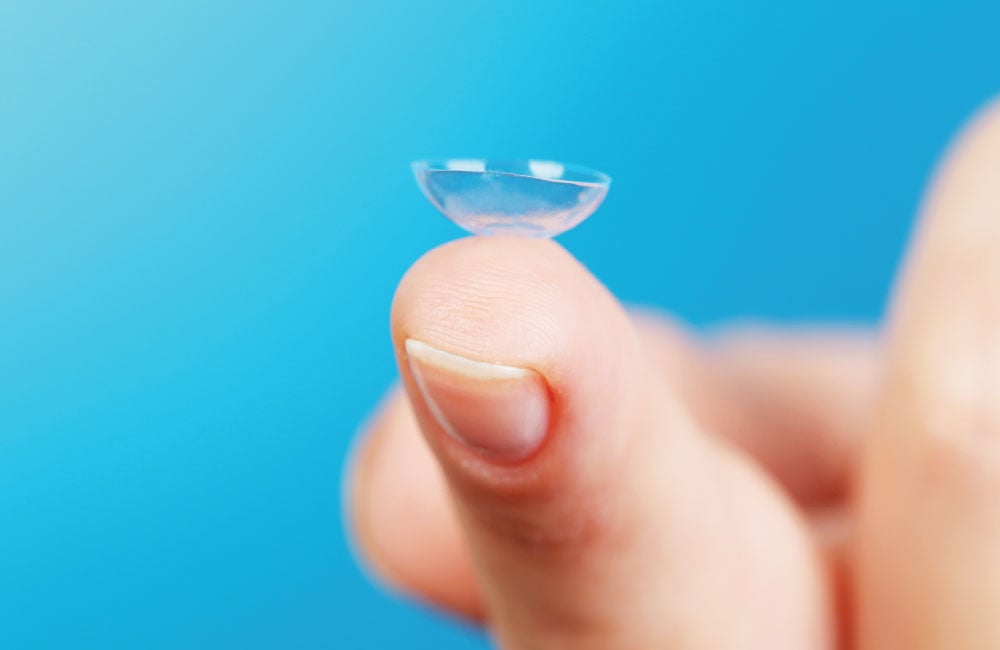Contact lenses are considered medical devices that correct numerous types of refractive errors for individuals around the world to yield clear vision. Contact lenses are becoming increasingly more popular due to the wide range of benefits that traditional spectacles cannot offer.
Contact lenses are cosmetically less noticeable than glasses, they can correct simple or complex refractive errors such as keratoconus (severe steepening of the cornea), and they provide freedom from glasses for athletes when competing.
But with all this popularity, are we compromising our ocular health?
What are expired contacts, and what does it mean if they are expired?
Every type of contact lens is produced by a specific manufacturer who determines the expiration date. This date is typically four years in the future for soft contact lenses from the time of production. Beyond this date, the company can no longer guarantee that the solution that houses the contact lens will be of optimal quality for the patient.
When contact lenses are produced, they are packaged and sealed in a solution to provide an optimal environment for your lens. This environment has a preservative-free solution to keep the contact lens at an optimal pH level to prevent deterioration or dehydrating.
Related: See the best contact lenses for dry eyes.
When the expiration date has been reached, even if the package is unopened, the lens is now in a compromised state that is prone to adverse outcomes that can have detrimental effects on the individual.
If you are like a lot of us and did not realize that contact lenses could expire, take a look at your contact lens box. The box will list the pertinent parameters for the specific lens, such as the type of contact, expiration date, power, cylinder, base curve, and diameter.

Will I be okay if I wear expired contacts?
Possibly, but is it worth the risk? After all, you only get two eyes.
The Food and Drug Administration (FDA) has instilled strict requirements for any sale of contact lenses in the United States. These requirements were created to protect the consumers, provide regulation, and to provide guidelines for development.
The FDA created three classes to determine the minimal amount of risk that a medical device can have on an individual. Different contacts are classified depending on the type of wear. Regular wear contacts are considered a Class II medical device, and extended wear contacts (up to 7 days of continuous wear) and overnight contact lenses are considered a Class III medical device.
What do these different classes even mean?
Class II medical devices state that without proper physician oversight, regular wear contacts pose a moderate risk to patient health.
Class III medical devices pose an even higher risk to a patient’s health without proper physician oversight. Class III products pose a much higher risk of injury and are subjected to increased regulation to ensure safety and effectiveness.
What can happen if I decide to wear expired contact lenses?
The decision to wear expired contact lenses can present several negative ocular health outcomes. Remember, once that expiration date is reached, the solution is more likely to become infiltrated with bacterial, fungal, and amoebae pathogens. This increases your risk of discomfort, infections, and potential permanent vision loss.
Contact lenses have been well studied and researched; they have many benefits but also have drawbacks even for a healthy individual with a healthy ocular surface. They are relatively expensive over time, they reduce sensitivity to the eye, they can disrupt the front portion of your eye (infections, scrapes, scratches), and they also increase your risk of dry eye disease. Dry eye is a condition where the individual produces either an inadequate amount of tears, tears with poor stability, or a combination of both.
When you wear expired contacts, you put yourself at an increased risk for bacterial keratitis. This is a bacterial infection of the cornea, which is the transparent `window’ of the eye. This creates a disruption of the front layer of the eye, which is called an ulcer. Some of the most common invasive pathogens include Pseudomonas aeruginosa (60% of bacterial keratitis in contact lens wearers), Staphylococcus aureus, and Streptococci.
What is even scarier is that some bacteria can invade without needing to have any disruption of the ocular surface. They can invade even a perfectly healthy cornea. These pathogens include Neisseria gonorrhoeae, Corynebacterium, and Haemophilus influenzae.
Wait, it gets worse?
Do you rinse your contact lenses with tap water?
Do you wear your contact lens when you shower or are in a swimming pool?
If you are guilty of either of those questions, you are at risk for one of the most feared and most severe contact lens-related infections, called Acanthamoeba keratitis.
This is a free-living protozoan that lives in the upper respiratory tract, along with soil and water. This is why eye care professionals stress the importance of never swimming, showering in your contact lens, or making your own contact lens solution using tap water.
If you want to swim with contact lenses, just make sure you wear swimming goggles that have a really good air-tight seal so now water goes in your eyes. Here are our recommendations for the best swim goggles for contacts.
Acanthamoeba can penetrate through layers of the cornea, disrupting sensitive corneal nerves and creating deposits that cloud up your vision. The infection presents similarly to other bacterial and viral infections, which can make it tough to diagnose. If the condition progresses, it could ultimately lead you to have a corneal transplant in an attempt to fix the damage that has been caused.
Common signs and symptoms of infections will present with photophobia (sensitivity to light), blurred vision, foreign body sensation, swollen eyelids, pain, and discharge from the eye.
If you experience any of these, seek treatment from your eye care professional urgently!
The first thing everyone learns about putting in contact lenses is to make sure they wash their hands. The 2nd thing should be to never wear expired lenses.
What if I can’t afford new contact lenses?
Patients over-wearing contacts is a common problem that eye care professionals are faced with. This includes sleeping in contacts that are not specifically designed for extended wear. This can stem from a multitude of reasons, but the most common reasons are usually due to financial reasons or poor/miscommunication between the doctor and the patient, which leaves the contact lens wearer “guessing” when to discard their lenses.
If you are having trouble affording new contacts, speak with your eye care provider about alternative options. He or she will be able to provide you with several different lens types (daily, bi-weekly, monthly) from different manufacturers to meet your needs. You should also look into manufacturer rebates and use sites like ours to find the best prices for your contacts. We also have an entire page dedicated to current coupons and promotions available on different contact lens sites.
Here are more details on specific rebate programs:
- Acuvue Oasys for Astigmatism Rebate
- 1-Day Acuvue Moist Rebate
- 1-Day Acuvue Oasys Rebate
- Acuvue Vita Rebate
- Acuvue Oasys with Transitions Rebate
- DAILIES AquaComfort Plus Rebate
- DAILIES Total 1 Rebate
- Alcon Precision 1 Rebate
- Alcon Air Optix Rebate
- Biofinity Rebate
- MyDay Rebate
- Clariti 1 Day Rebate
Am I able to purchase expired lenses?
No, absolutely not. Expired contacts are forbidden from being sold in the United States. The FDA maintains strict oversight of illegal dispensing and sales of expired contact lenses to protect the public. If you purchase contacts that are already expired, you should return them immediately for a box that isn’t expired or get a full refund.
Think twice before using expired contact lenses. Appropriate contact lens hygiene and proper lens wear schedules cannot be stressed enough!

Jeffrey Newland is a third-year optometry student at Nova Southeastern University in Fort Lauderdale, FL. He holds positions in The American Optometric Student Association, The National Optometry Student Association, and the Nova Optometric Practice Management Association. He received his Health and Human Physiology undergraduate degree from the University of Iowa. He has a passion for specialty contact lenses and ocular surface disease.